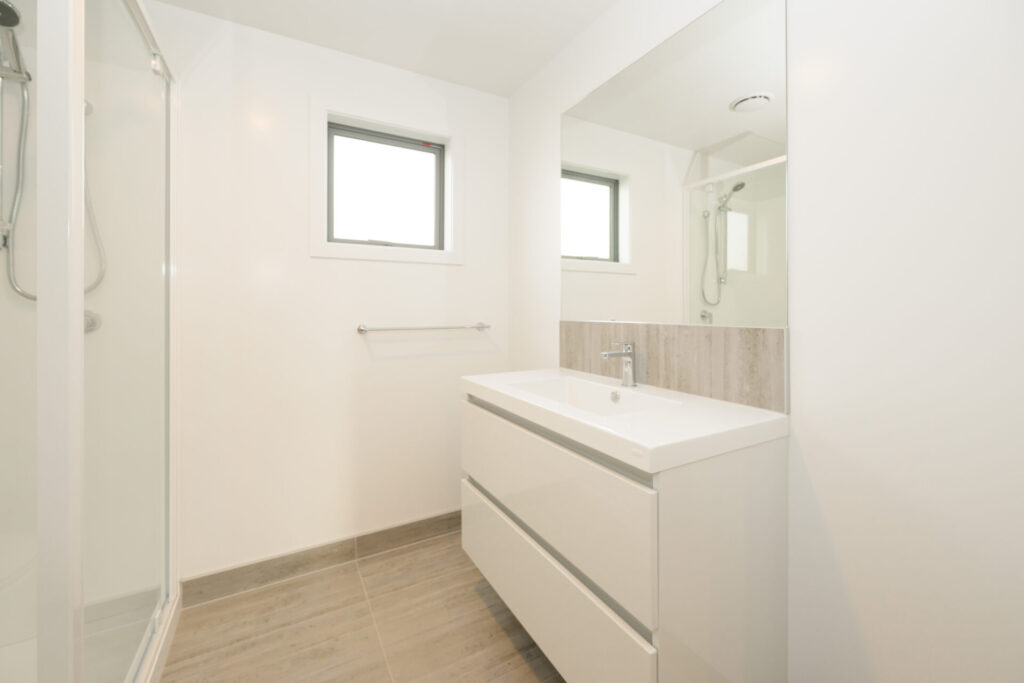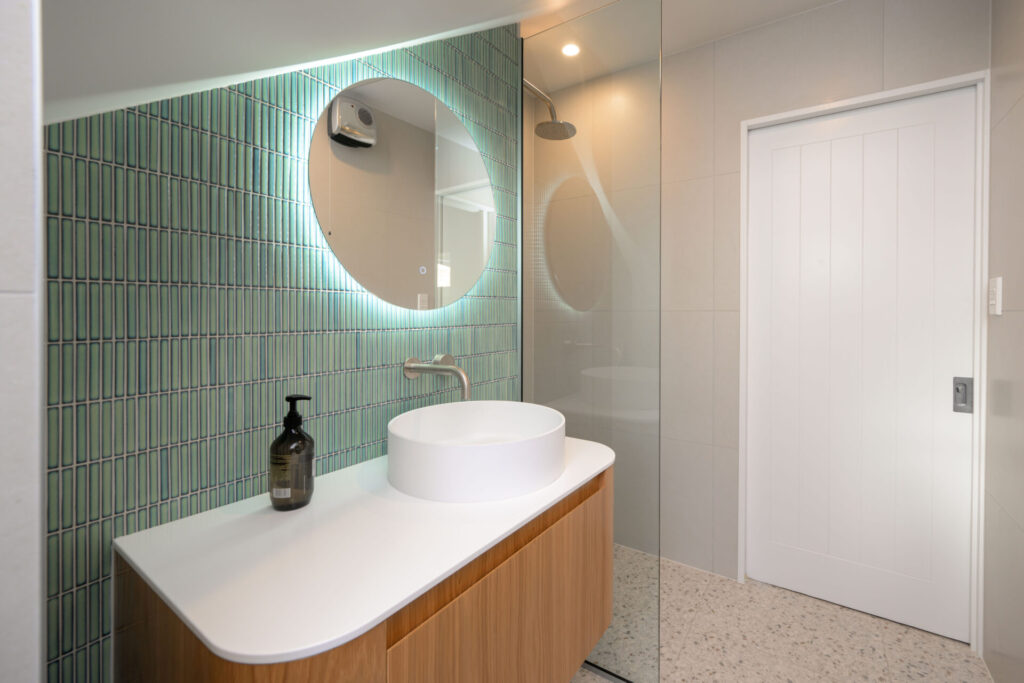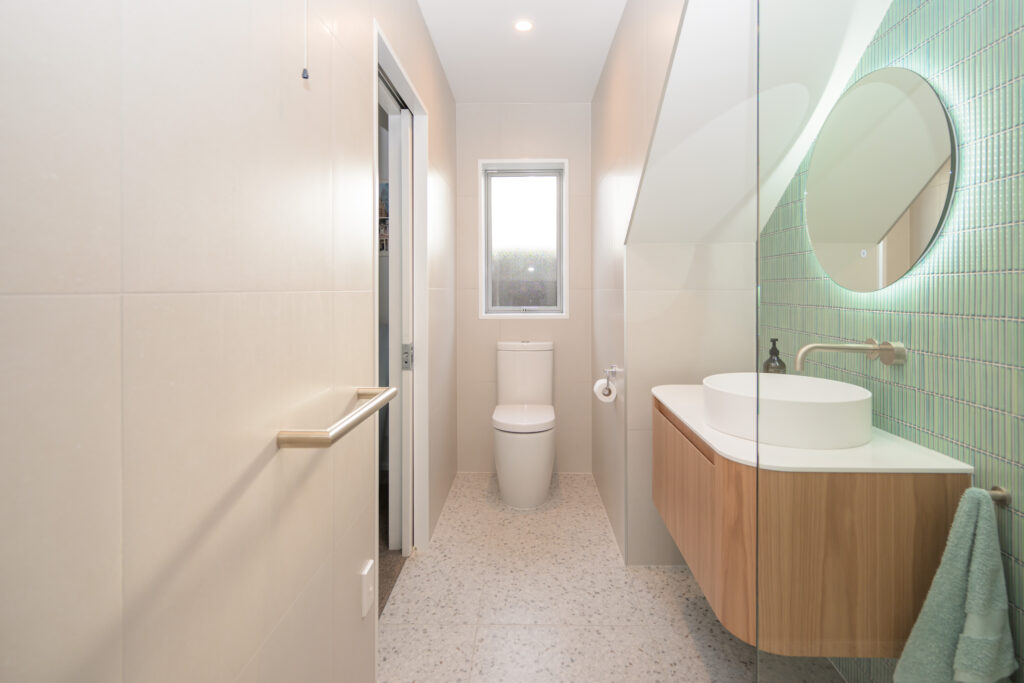Welcome to our comprehensive guide on the average cost to install a bathroom vanity in NZ! Whether you’re planning a small bathroom refresh or a full renovation, installing a new vanity is one of the easiest and most impactful upgrades you can make. A well-chosen vanity not only enhances the look of your bathroom but also adds valuable storage and functionality. However, before jumping into your project, it’s important to understand the potential costs involved. In this article, we’ll break down the typical expenses of bathroom vanity installation in New Zealand, covering everything from the price of the vanity itself to labor, plumbing, and more. Let’s dive in so you can budget with confidence and make informed decisions for your next bathroom makeover!
On average, the cost to install a bathroom vanity in New Zealand ranges from $1,000 to $3,500. This includes the price of the vanity unit itself, which can vary between $200 and $2,000 depending on materials and design, as well as labor costs for plumbing and installation, which typically fall between $500 and $1,500.
- What’s Included In A Bathroom Vanity Installation?
- Breakdown Of Costs For Bathroom Vanity Installation In NZ
- Factors That Can Affect The Cost
- DIY Vs. Professional Installation: Pros, Cons, And Costs
- How To Choose The Right Bathroom Vanity For Your Space And Budget
- Budget-Friendly Tips For Reducing Vanity Installation Costs
- FAQs: About Average Cost To Install A Bathroom Vanity NZ
- How much does it cost to install a bathroom vanity in New Zealand?
- What factors affect the cost of installing a bathroom vanity?
- Can I install a bathroom vanity myself?
- What is the cost of a standard bathroom vanity in New Zealand?
- How long does it take to install a bathroom vanity?
- Do I need a plumber to install a bathroom vanity?
- Can I reuse the plumbing from my old vanity?
- What materials should I choose for my bathroom vanity?
- How do I dispose of my old bathroom vanity?
- Do I need council consent to install a new bathroom vanity in NZ?
- Conclusion
What’s Included In A Bathroom Vanity Installation?
Bathroom vanity installation involves several critical steps to ensure a functional and aesthetically pleasing space. The process usually starts with the removal of the old vanity, if there is one. This includes detaching the existing unit, disconnecting water lines, and clearing the space for the new installation.
Once the old vanity is out, the next step is the installation of the new vanity. This often includes setting up the cabinetry, securing the countertop, and placing the sink. If the vanity includes pre-assembled parts, the installation will focus on connecting these components securely and ensuring they align perfectly within the space.
Plumbing work is another essential part of the installation. This includes reconnecting the water lines, installing taps, and ensuring proper drainage. It’s vital that these connections are tight and leak-proof to avoid any future issues.
In some cases, electrical work may also be required, such as wiring for lighted mirrors or power outlets. This step must be handled with care to meet safety standards.
While DIY installation is an option, professional installation is highly recommended, especially for more complex setups involving plumbing and electrical work. Professionals ensure that everything is installed correctly, minimizing the risk of leaks, faulty wiring, or damage to your new vanity. This ensures long-term functionality and peace of mind.
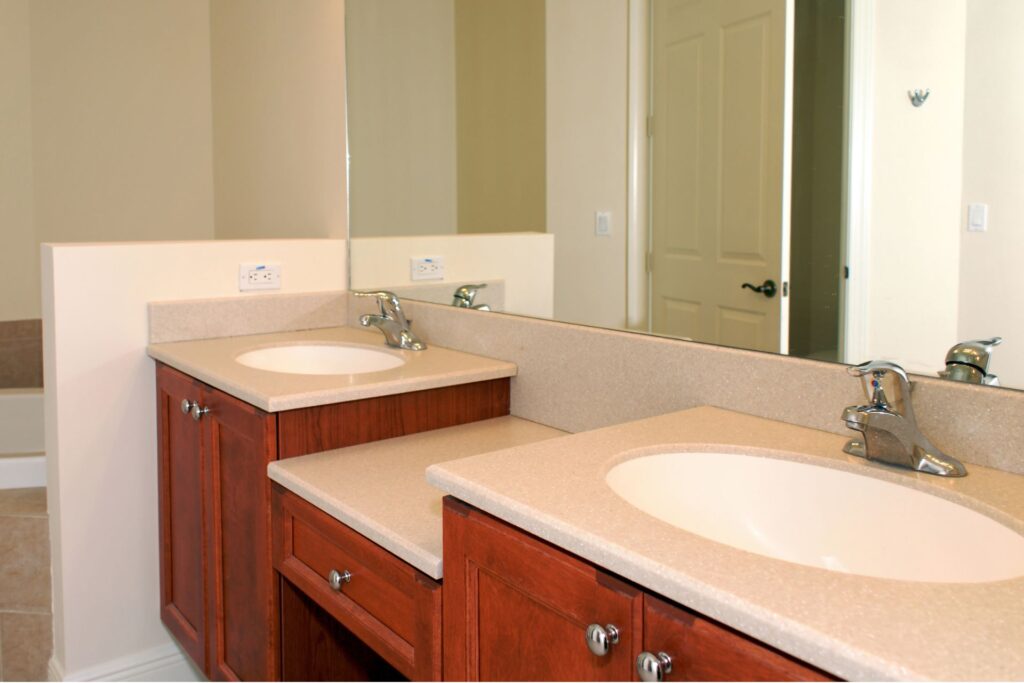
Breakdown Of Costs For Bathroom Vanity Installation In NZ
Bathroom vanity installation is a popular home improvement project in New Zealand, offering both aesthetic and functional upgrades to any bathroom. However, before diving into the renovation, it’s crucial to understand the costs involved. From the vanity unit itself to labor fees and potential additional expenses, this guide will break down the cost structure, giving you a clear understanding of what to expect.
Cost of the Vanity Unit Itself
The vanity unit is the centerpiece of any bathroom, and its price can vary significantly based on the material, design, and features you select.
- Entry-Level or Basic Vanities: If you’re on a budget, basic models typically range from $200 to $600. These are often pre-made and come in standard sizes and designs.
- Mid-Range Options: For those wanting a balance between quality and affordability, mid-range vanities cost between $600 and $1,500. These units generally offer a wider range of designs, materials, and sizes, giving you more customization options.
- High-End/Luxury Models: If you’re looking for top-tier finishes, designer brands, or unique materials, expect to pay over $1,500. Luxury vanities often feature premium woods, marble countertops, and bespoke designs.
- Custom-Built Options: For homeowners wanting a completely personalized design, custom vanities can cost $2,000 or more. This option allows for precise tailoring to your space and preferences but comes at a higher price.
Cost of Installation (Labour Fees)
Labor costs play a significant role in the overall budget for a bathroom vanity installation. Depending on the complexity of the project and the professionals required, labor can range considerably.
- Plumber: Installing a vanity often involves connecting pipes and ensuring proper drainage. A plumber typically charges $80 to $150 per hour, with an average total cost of $300 to $600 for a standard installation.
- Cabinet Maker/Carpenter: If your vanity requires custom fitting or adjustments, a cabinet maker or carpenter will charge around $50 to $100 per hour. Depending on the complexity, their fees range from $300 to $700.
- Additional Electrical Work: If your vanity includes electrical components, such as lighting or outlets, an electrician will need to be involved. Electricians typically charge $90 to $150 per hour.
- Total Labour Costs: In total, the labor for a typical bathroom vanity installation can range from $500 to $1,500, depending on the scope of work.
Other Potential Costs
In addition to the vanity and labor, other factors may contribute to the overall cost of your installation.
- Plumbing Adjustments: If the installation requires relocating existing plumbing, this can add $200 to $500 to the total cost.
- Tile Work or Repairs: Depending on the design and materials of your bathroom, tile work may be necessary. This could range from $200 to $800, depending on the complexity and the quality of the tiles used.
- Disposal of Old Vanity: If your installer needs to remove and dispose of your old vanity, expect an additional charge of $100 to $200.
Overall Estimated Cost
When considering all factors—vanity selection, labor, and potential additional costs—a bathroom vanity installation in New Zealand typically ranges between $1,000 and $3,500. The final price will depend on the complexity of the job, the quality of the vanity, and any extra work required.
In summary, understanding the costs involved in a bathroom vanity installation ensures that you can budget effectively and avoid unexpected expenses. Whether you opt for a budget-friendly option or a luxury upgrade, being aware of these factors will help you make an informed decision for your bathroom renovation project.
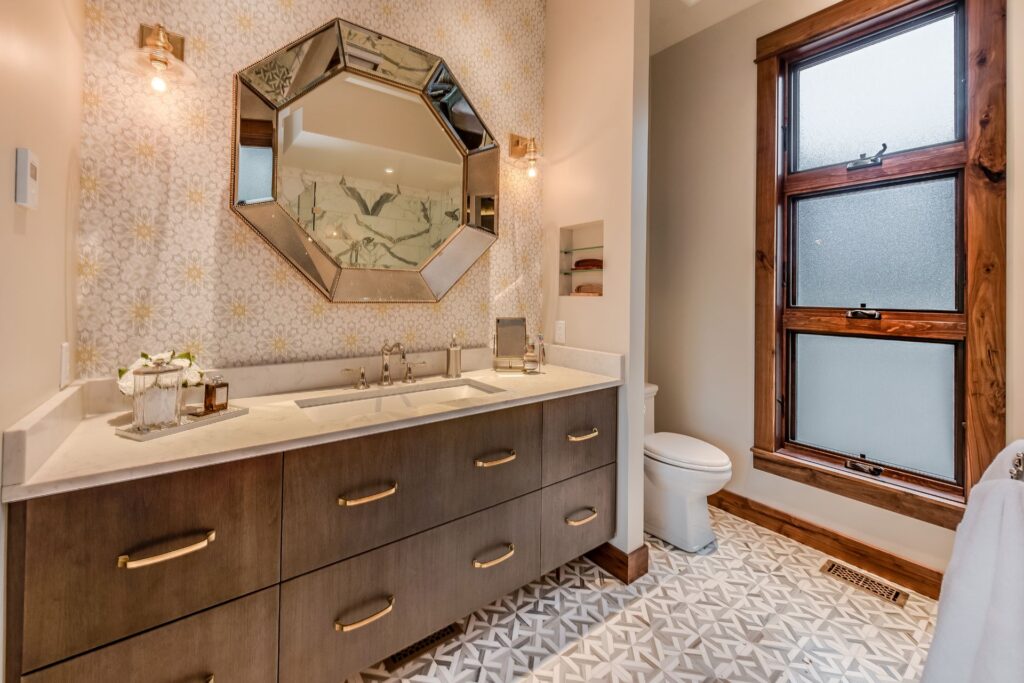
Factors That Can Affect The Cost
When planning a vanity installation in your bathroom, it’s important to understand the factors that influence the overall cost. Knowing these factors helps you budget effectively and make informed choices about materials, size, and style. Here’s a breakdown of the key elements that affect the price of your vanity installation:
Size of the Vanity
One of the most significant factors influencing the cost of a vanity is its size. Larger vanities naturally require more materials, whether it’s wood for the cabinetry or stone for the countertops. In addition, larger units take more time and labor to install. If you’re aiming for a spacious vanity with multiple drawers and cabinets, expect to pay more due to the increased demand for materials and the complexity of the installation.
Type of Vanity
The style of vanity you choose also plays a major role in the final cost. Free-standing vanities tend to be more affordable because they are easier to install. Wall-mounted vanities, on the other hand, often require more intricate installation work, which can drive up labour costs. Additionally, if you opt for a custom-made vanity instead of a pre-fabricated unit, be prepared for higher costs. Custom designs involve more detailed craftsmanship, ensuring that the vanity perfectly fits your space and meets your design preferences.
Material Choices
The materials you select for your vanity are a key factor in determining its price. Solid wood vanities, while durable and aesthetically pleasing, come with a higher price tag compared to laminate options. Similarly, high-end countertop materials like natural stone or marble are more expensive than ceramic or synthetic alternatives. While choosing premium materials enhances the look and longevity of your vanity, it will also increase the overall cost.
Additional Features
Incorporating extra features into your vanity can also raise the price. Features such as soft-close drawers, integrated sinks, or built-in lighting add convenience and style but come at an additional cost. These modern amenities not only require more intricate installation but often involve higher-quality materials.
Complexity of Plumbing Work
The state of your bathroom’s plumbing system can impact the cost of installing a new vanity. In older homes, outdated plumbing may not align with modern vanity designs, requiring additional plumbing work. This can add to the labor time and complexity of the project, increasing the overall cost.
Location in New Zealand
Where you live in New Zealand can affect labor costs for vanity installations. In urban areas like Auckland, Wellington, or Christchurch, labor rates tend to be higher due to increased demand and cost of living. If you’re in a rural area, you may benefit from lower labor costs, although material delivery fees could increase.
Understanding these cost factors will help you make more informed decisions as you plan your bathroom vanity installation, ensuring that your investment meets both your aesthetic and budgetary needs.

DIY Vs. Professional Installation: Pros, Cons, And Costs
When it comes to installing major fixtures or appliances, you’re often faced with a choice: do it yourself (DIY) or hire a professional. Both options have distinct advantages and potential drawbacks, and understanding these can help you make the best decision for your project.
DIY Installation
- Pros: One of the main benefits of a DIY installation is cost savings. By taking on the labor yourself, you can avoid the high costs of hiring a professional. This option also gives you full control over your project, allowing you to work at your own pace and ensure things are done to your satisfaction. For many, there’s also a sense of pride in completing the work themselves.
- Cons: However, DIY installation isn’t for everyone. It requires specific tools and knowledge, especially for complex jobs involving plumbing or electrical work. Mistakes in these areas can lead to expensive repairs down the line, potentially negating any savings. Plus, it can be time-consuming, especially if you lack experience.
- Cost Savings: DIY can save you anywhere from $500 to $1,000, depending on the scope of the project. But, if errors occur, the repair costs could easily outweigh the initial savings.
Professional Installation
- Pros: Hiring a professional ensures that the job is done right the first time. Professionals bring expertise in plumbing, electrical work, and structural modifications, guaranteeing that your installation complies with safety standards and building codes. Additionally, they can often complete the work faster than a DIY approach.
- Cons: The biggest downside to professional installation is the upfront cost. However, this investment could save you from costly mistakes or repairs in the future.
- When Professional Help is Essential: If your project involves complex plumbing, electrical modifications, or wall alterations, it’s worth the extra cost to hire a professional. They’ll ensure the job is done safely and correctly, giving you peace of mind.
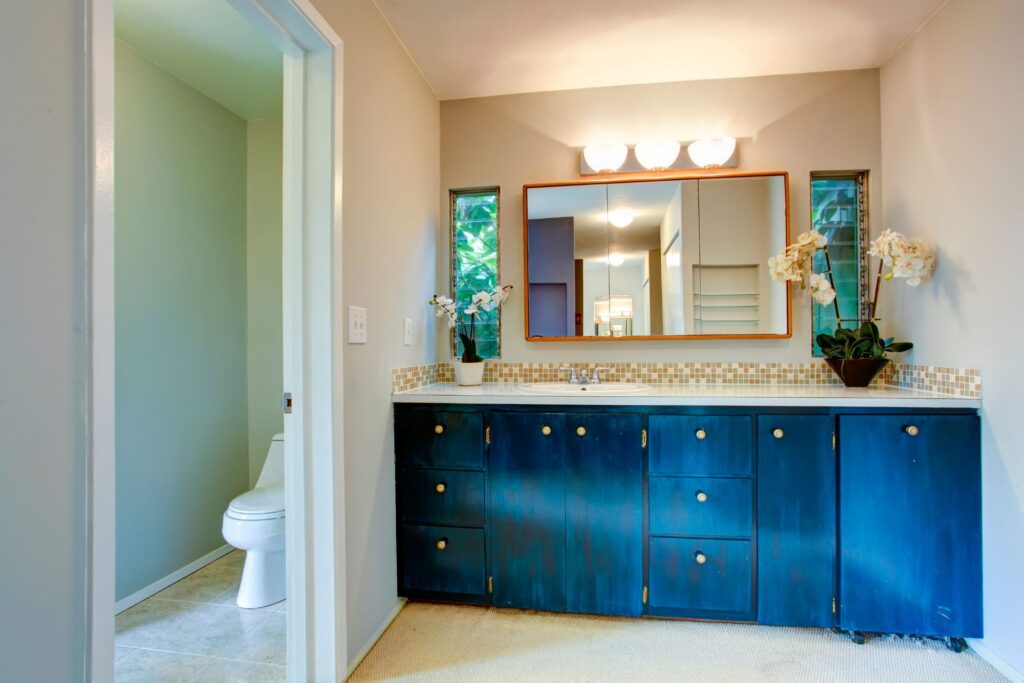
How To Choose The Right Bathroom Vanity For Your Space And Budget
Choosing the right bathroom vanity involves balancing functionality, style, and cost. The vanity is a focal point in any bathroom, and getting it right can elevate both the look and practicality of the space. Below are key factors to consider when selecting the perfect vanity for your bathroom, whether you’re working with a spacious master bath or a cozy powder room.
Assess Your Bathroom’s Layout and Size
Before making any decisions, assess your bathroom’s layout and available space. Measure the area where you plan to install the vanity, taking note of the room’s overall dimensions. For smaller bathrooms, a single vanity might be the best option, while larger spaces may allow for a double vanity. Consider whether the vanity will need to fit between walls or if you have more freedom with freestanding options.
Set a Budget
Knowing your budget ahead of time will streamline your choices. Bathroom vanities come in a wide range of prices, and it’s important to account for both the cost of the vanity itself and any associated installation fees. Having a clear budget will help you avoid overspending while ensuring you get a product that meets your expectations.
Choose Materials Wisely
The material of your vanity greatly impacts both its durability and aesthetic appeal. For those on a budget, materials like MDF (medium-density fiberboard) or laminate can offer an affordable yet stylish solution. If you’re looking for something more durable and mid-range in price, wood veneer or quartz countertops are excellent choices. For a more luxurious look, high-end materials like marble and solid hardwood bring timeless elegance, but at a higher price point.
Consider Functionality
Functionality should never be overlooked. Consider your storage needs: will you require ample drawer space, or is a simpler design sufficient? The sink style also plays a significant role—under-mount sinks provide a sleek, modern look, while vessel sinks can add an artistic touch. Your vanity should also complement the overall design of your bathroom, ensuring it fits seamlessly with the decor.
Check for Warranty and Durability
Finally, consider the durability of the vanity, particularly if you live in humid climates like New Zealand, where moisture can be an issue. Look for materials that can withstand humidity and frequent use. Additionally, ensure the vanity comes with a solid warranty, offering you peace of mind for years to come.
By carefully considering these factors, you can find a bathroom vanity that suits your space, style, and budget while enhancing the overall functionality of your bathroom.
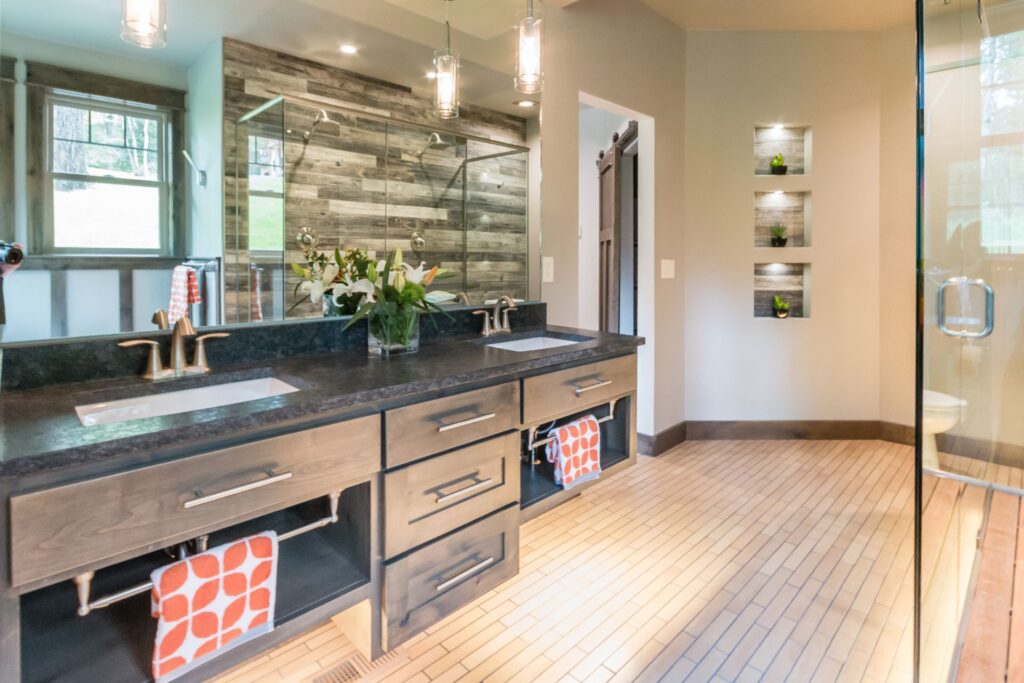
Budget-Friendly Tips For Reducing Vanity Installation Costs
Installing a new vanity in your bathroom doesn’t have to break the bank. With a little strategy and creativity, you can cut costs without sacrificing quality or style. Here are some practical tips to help you stay within budget:
- Buy on Sale or Clearance: Timing your purchase can lead to significant savings. Watch for end-of-season sales or holiday promotions at major home improvement stores. Retailers often discount vanities to clear out older models, allowing you to get a high-quality product for less.
- Consider Second-Hand or Refurbished Units: Shopping for pre-loved or refurbished vanities on platforms like Facebook Marketplace or Trade Me is a great way to find stylish pieces at a fraction of the cost. Many sellers offer gently used items that look almost new, helping you save money while still achieving the desired look.
- Opt for DIY Removal: Professional installation can be pricey, but you can lower costs by removing your old vanity yourself. With a bit of research and the right tools, this is an achievable task that saves you on labor fees.
- Pre-fabricated Vanities Over Custom-Made: While custom vanities may seem appealing, pre-fabricated options are much more affordable and often come in a variety of styles to suit your needs. These off-the-shelf units look great and won’t strain your budget.
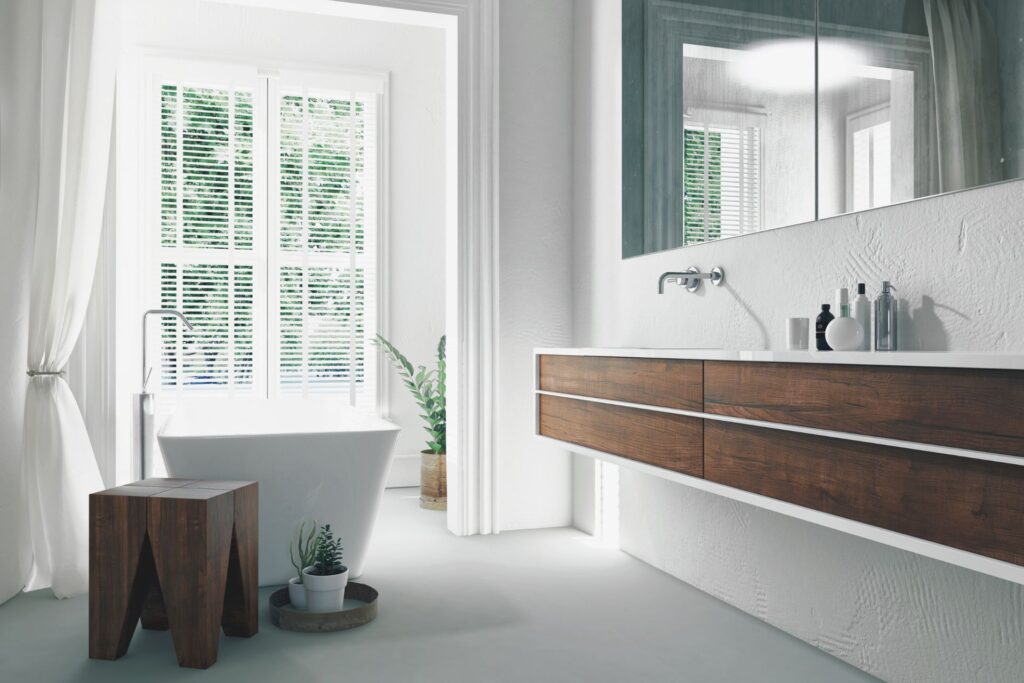
FAQs: About Average Cost To Install A Bathroom Vanity NZ
How much does it cost to install a bathroom vanity in New Zealand?
On average, the cost to install a bathroom vanity in New Zealand ranges between $1,000 and $3,500. This includes the cost of the vanity unit itself, installation labour, and any additional plumbing or electrical work required.
What factors affect the cost of installing a bathroom vanity?
Several factors can influence the cost, including the size and type of vanity, the materials used, the complexity of plumbing work, and whether additional services such as electrical work or tile adjustments are needed. Custom vanities or high-end materials also raise costs.
Can I install a bathroom vanity myself?
Yes, DIY installation is possible, but it requires some skills, especially if plumbing or electrical work is involved. If you’re confident in your abilities, DIY can save money, but hiring professionals ensures the job is done correctly and safely.
What is the cost of a standard bathroom vanity in New Zealand?
Basic bathroom vanities can range from $200 to $600, while mid-range options typically cost $600 to $1,500. High-end or custom-built vanities can exceed $2,000, depending on materials and design.
How long does it take to install a bathroom vanity?
The installation time for a bathroom vanity typically ranges from 3 to 5 hours. However, the timeline can vary depending on the complexity of the job, the size of the vanity, and whether any plumbing or electrical adjustments are needed.
Do I need a plumber to install a bathroom vanity?
Yes, it’s generally recommended to hire a plumber for bathroom vanity installation, especially if the project involves connecting or adjusting water lines. Plumbers ensure that the installation is done properly to avoid leaks or other issues.
Can I reuse the plumbing from my old vanity?
In many cases, you can reuse the existing plumbing if the new vanity has a similar layout to the old one. However, if the new vanity requires changes to the position of pipes or drains, additional plumbing work will be needed.
What materials should I choose for my bathroom vanity?
Materials can range from budget-friendly options like laminate and MDF to more premium choices like solid wood and stone countertops. The material you choose will impact both the price and the durability of your vanity.
How do I dispose of my old bathroom vanity?
Many installers will offer to remove and dispose of your old vanity for an additional fee, usually between $100 and $200. Alternatively, you can dispose of it yourself by arranging for it to be collected by a waste removal service or donating it if it’s in good condition.
Do I need council consent to install a new bathroom vanity in NZ?
In most cases, you won’t need council consent to install a new vanity, unless significant changes to the plumbing or electrical systems are required. However, it’s always a good idea to check with local authorities or a contractor to ensure you comply with any regulations.
Conclusion
Upgrading your bathroom with a new vanity offers numerous benefits, making it a worthwhile investment. Not only does it enhance the aesthetic appeal of one of the most-used rooms in your home, but it can also increase your property’s resale value. A well-designed vanity provides additional storage space, elevates the overall ambiance, and serves as a functional centerpiece. While the costs of installing a bathroom vanity in New Zealand can vary, with proper planning and budgeting, this renovation can be surprisingly affordable. Whether you choose a budget-friendly DIY approach or hire professionals for installation, a new vanity can transform your bathroom and give it the refresh it deserves. If you’re ready to elevate your space, now is the perfect time to take action.

